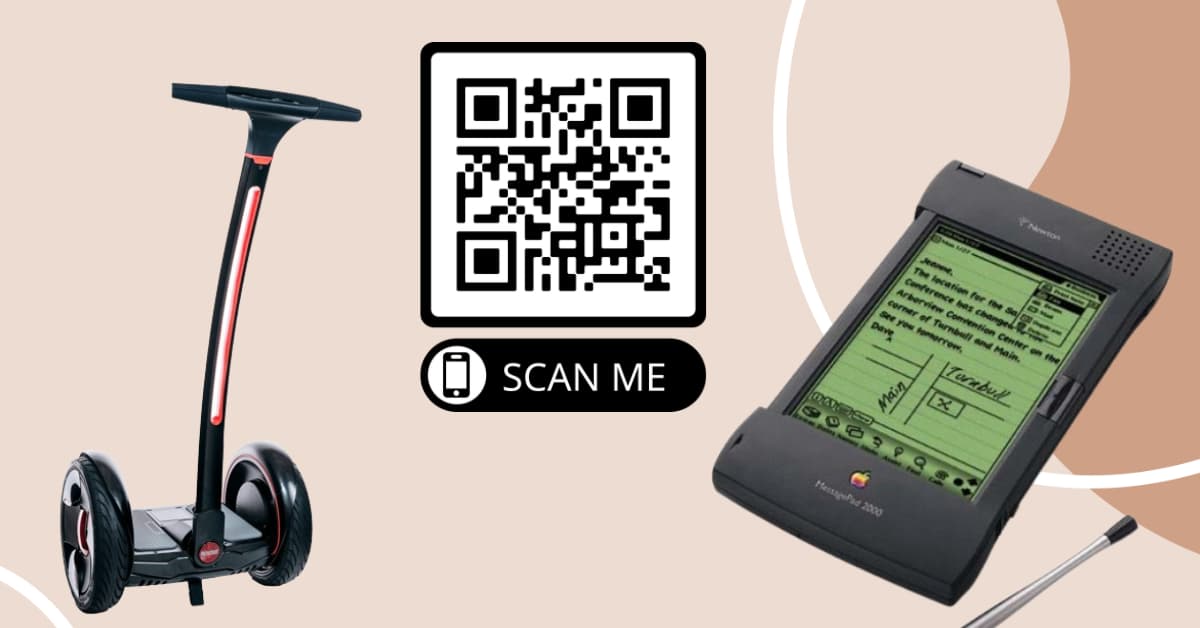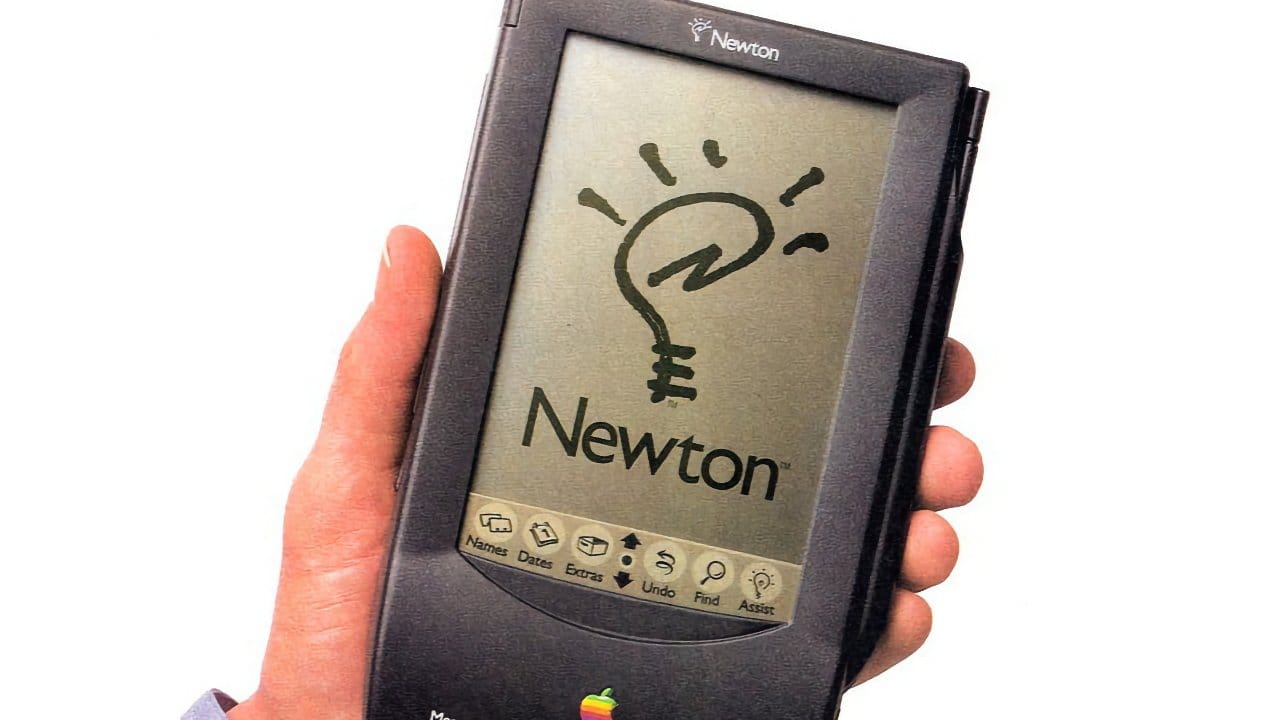Products Ahead of Time

In the dynamic world of technology, certain products emerge as pioneers, pushing the boundaries of the norm. Let's pay tribute to the brilliant minds and visionaries behind these groundbreaking innovations. However, not every innovative journey leads to success. Join us as we explore the stories of products that, despite their visionary concepts, faced obstacles due to being ahead of their time.
The Pioneers: Visionaries Ahead of Their Time
Imagine a landscape where innovation knows no bounds – where inventors and entrepreneurs dare to dream beyond the constraints of their present. Our pioneers, the architects of the future, envisioned a world transformed by their revolutionary ideas. Take, for instance, the visionary minds behind Apple Newton, Segway, and QR Codes. These individuals challenged the status quo and reshaped the foundations of our technological landscape.
As we dive into their stories, we'll unravel the essence of their revolutionary ideas. The Apple Newton, a handheld precursor to modern smart devices, sought to redefine personal computing. Segway, an eco-friendly marvel, aimed to revolutionize personal transportation. QR Codes, often misunderstood in their early days, presented instant information access.

These pioneers embarked on journeys fueled by imagination, redefining norms and setting new standards for innovation. Their stories are not just tales of success or failure but chapters in the ongoing narrative of human progress. Join us as we explore the intricacies of their struggles, the unforeseen challenges, and the enduring legacy of innovation that continues to shape our technological landscape today.
Products That Fell Through the Cracks
As we journey through the realm of visionary products, we inevitably stumble upon those that, despite their bold concepts, faced the stark reality of failure.
Apple Newton: The Precursor to Smart Devices
The Apple Newton was more than just a handheld Personal Digital Assistant (PDA); it was an early glimpse into the world of tablets.
It even envisioned a world where devices recognized handwriting and embraced wireless capabilities – revolutionary ideas! Apple Newton was first released in 1993, it was so ahead of time!
When I first learned about this device, invented 30 years ago, I was in awe of the vision and creativity displayed by those who envisioned and created this technology. Their brilliance is undeniable, and I feel a deep sense of respect for their foresight.
At the same time, there's a tinge of sadness, recognizing that many people might not fully grasp or appreciate the magnitude of their achievements. Because now I'm, like, c'mon, I'd definitely buy it, that's what I need; what was wrong with you people? Sadly, but true, humanity was not adequately prepared for the impact of such groundbreaking technologies.

Besides people's unpreparedness, Newton faced the fact that a technological landscape was also not quite ready for its brilliance. Beyond the device itself, the bigger tech world of that time wasn't ready to support what the Newton was trying to do. Imagine playing a futuristic game with old-school equipment – it just doesn't work smoothly. The tech infrastructure and what people expected from gadgets weren't aligned with what the Newton brought to the table.
It faced discontinuation in 1998.
Newton's story teaches us that sometimes, even the coolest ideas need the right time and place to shine.
Segway: Revolutionizing Personal Transportation
In the early 2000s, Segway rolled onto the scene, promising a game-changer in personal transportation. This self-balancing marvel was all about making getting around easy and eco-friendly. However, despite its innovative design and green intentions, Segway struggled to win over the masses.
Picture this: between its release in 2001 and its end in 2020, Segway faced hurdles beyond just its cool features. Sure, it was a nifty gadget, but it couldn't shake off a social image that confined it to a specific category. The public perception struggled to see it as more than just a fancy scooter.
Segway's downfall wasn't because it lacked innovation or tried to be cool. The issue was that people couldn't quite figure out where it fit into their daily lives, and the company couldn't manage to lower production prices, resulting in huge segway prices that also were not welcomed. Only battery costed 1000$, and the device price was 5000-10000$. It became more of a novelty than a practical solution. Besides, there were significant reputation losses due to some high-profile cases of falling off Segway - first it was President George W. Bush. Then, the Segway company owner rides a scooter off a cliff and dies.
Despite its eco-friendly intentions and attempts to revolutionize personal transportation and the relative safeness of the invention, Segway ended up as a cool idea that never quite caught a widespread ride.
In 2020, Segway officially discontinued its production. However, it's worth noting that Segway's innovative technology didn't entirely vanish. The self-balancing technology pioneered by Segway found new life in various electric mobility devices. Current electric scooters and similar personal transportation gadgets often incorporate Segway's pioneering tech.
Interestingly enough, despite discontinuation, Segways nowadays are sometimes used for city tours.

QR Codes: A Revolutionary but Misunderstood Concept
In in 1994, the tech landscape witnessed a quiet revolution with the invention of QR codes by Masahiro Hara (Denso Wave employee). These pixelated squares were designed to enable quick access to information, bridging the gap between the physical and digital worlds. However, their journey was one of early adoption that went largely unnoticed.
Surprisingly, QR codes found their first applications in the automotive industry, adopted by Denso Wave's parent company, Toyota, to streamline their manufacturing processes. The technology was a pioneer ahead of its time, without fully embracing utility in an era that hadn't fully embraced the power of smartphones.
In a calculated move, Denso Wave opted to release QR code technology to the public without charge while retaining the sale of the scanner technology necessary for reading them. Hara and the team at Denso Wave initially envisioned the future applications of QR codes in various industrial contexts, but the unforeseen surge in popularity among small businesses and the general public caught them by surprise.
The turning point came with the integration of cameras into cellphones, providing an ideal technology for QR code scanning. The shift occurred in 2002 when Sharp introduced the first phone equipped with a QR scanner, prompting other manufacturers to follow suit swiftly. Consequently, the landscape changed dramatically, and anyone with a smartphone suddenly had a built-in QR scanner at their fingertips.
As the 21st century dawned and smartphones became an integral part of daily life, QR codes found a renewed purpose, especially when the COVID pandemic hit.
Yet, their initial adoption in the late '90s set the stage for a comeback. The quiet presence of QR codes in the automotive sector laid the groundwork for their resurgence when smartphones gained widespread popularity.
The early adoption of QR codes in the late '90s may not have triggered an immediate digital revolution, but it laid a foundation that would be built upon in the smartphone era. Today, QR codes have become an integral part of our daily lives, linking the physical and digital seamlessly. The story of QR codes teaches us about the persistence of innovative ideas, sometimes waiting for the right technological context to flourish (sometimes waiting for 20 years!).
The tales of products ahead of their time are reminders of the delicate dance between innovation and societal readiness. The stories of the Apple Newton, Segway, and QR Codes underscore the intricate interplay of visionary concepts, technological evolution, and consumer acceptance.
In product management, these narratives emphasize the need for a nuanced understanding of market dynamics, technological trends, and consumer behavior. The challenge lies not only in conceiving groundbreaking ideas but also in orchestrating their entry into a world ready to embrace their potential. As we celebrate the brilliance of the pioneers, we must reflect on the lessons learned from their struggles and successes, recognizing that timing, adaptability, and a keen understanding of the evolving landscape are the guiding principles for managing products ahead of their time. In this ever-evolving journey of innovation, the legacy of these visionary products remains as a compass for future product managers navigating the delicate balance between pushing boundaries and aligning with the pulse of societal and technological readiness.
